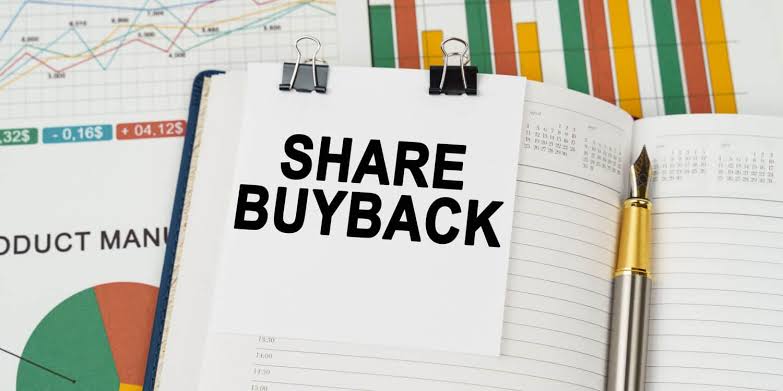Add your promotional text...
Why Companies Buy Back Shares: Strategies, Benefits, and Risks
Synopsis: Companies like Alphabet and Apple frequently engage in multi-billion dollar share repurchases, a strategy also gaining traction in India's financial markets. This blog delves into the reasons behind stock buybacks, the benefits and potential risks for investors, and key examples of companies leading in buybacks. We also explore how to evaluate buyback plans and upcoming buybacks in 2024, offering insights into their impact on shareholder value.
LEARNING AND EDUCATION
By Ashok Singh
5/30/20243 min read


In the financial headlines, tech giants like Alphabet (Google’s parent company) and Apple frequently appear, not just for their innovations but for their substantial share repurchases. Recently, Apple set a new benchmark by allocating an unprecedented US$110 billion for stock buybacks, a record in US history according to their Q1 2024 earnings report. This move has firmly established Apple as a leader in buybacks, holding six of the largest repurchase records.
The phenomenon isn't restricted to Silicon Valley. India’s financial markets have also seen a surge in buybacks. In just the first five months of 2024, more than 14 companies on Dalal Street have either announced or completed stock repurchases. Despite their growing prevalence, stock buybacks are a contentious topic among investors. Some argue that they represent a misuse of corporate funds, while others see them as a strategic way to provide tax-efficient returns to shareholders.
What Is a Share Buyback?
A share buyback occurs when a company purchases its own shares from the marketplace, either through a tender offer or open market transactions. These buybacks are typically executed at a price above the current market value and serve various strategic purposes. For example, a company might use buybacks to return excess cash to shareholders, which it doesn’t need for operational or investment purposes.
Why Companies Opt for Buybacks
The motivations behind stock buybacks can be complex, blending shareholder value enhancement with strategic financial management. Here are some common reasons:
1. Enhancing Shareholder Value: The primary objective is often to increase the value of remaining shares by reducing the total number of shares outstanding. This creates a supply and demand dynamic that can lead to a higher share price.
2. Maximizing Returns: Companies, especially in India, strive to maximize shareholder returns. Buybacks can be more tax-efficient than dividends, as they often result in capital gains tax, which can be lower than income tax on dividends.
3. Flexibility Over Dividends: While dividends represent a long-term commitment, buybacks are one-time events, providing management with more flexibility.
4. Offsetting Dilution: Companies offering stock options may use buybacks to counteract the dilution of existing shares when these options are exercised.
Evaluating a Buyback Plan
For investors, assessing a buyback plan involves several key considerations:
Details of the Buyback: Investors should scrutinize the size, timeline, and method of the buyback.
Purpose and Alignment: Understanding the rationale behind the buyback and its alignment with shareholder value is crucial.
Buyback Price: Comparing the buyback offer price with the market price can indicate whether the buyback offers substantial value.
Company’s Financial Health: Analyzing the company’s profitability, cash reserves, debt levels, and growth prospects helps in understanding the potential long-term benefits.
Buyback History: Past buybacks can reveal whether the company has historically created long-term value through such programs.
Leading Buybacks in India
In 2023, 48 companies in India spent Rs 480.8 billion on buybacks, predominantly from sectors like IT, FMCG, and pharma. Here are some notable examples:
Tata Consultancy Services (TCS): Leading with five significant buybacks totaling Rs 830 billion over the past decade.
Wipro: Conducted multiple buybacks since 2016, amounting to Rs 455 billion.
Infosys: Four buybacks totaling Rs 397.6 billion over the last decade.
Larsen & Toubro (L&T): A Rs 100 billion buyback in 2023.
NMDC: Three buybacks totaling Rs 99.1 billion in the last decade.
Are Buybacks Beneficial for Investors?
The effectiveness of stock buybacks largely depends on their execution and context. A well-timed buyback by a competent management team can indicate strong confidence in the company’s future. Conversely, poorly timed buybacks or those aimed at merely boosting short-term stock prices can erode long-term shareholder value.
Upcoming Buybacks in 2024
Several companies have announced buybacks for 2024. Some notable ones include:
Anand Rathi Wealth: Rs 1.6 billion through a tender offer.
Cheviot Company: Rs 0.3 billion through a tender offer.
eClerx Services: Rs 3.9 billion through a tender offer.
Bajaj Consumer Care: Rs 1.7 billion through a tender offer.
Sharda Motor Industries: Rs 1.9 billion through a tender offer.
Potential Future Buybacks
Companies with high cash balances and low debt may also announce buybacks in 2024. These include:
HCL Technologies: With Rs 76.3 billion in cash and no debt.
Coal India: Holding Rs 302.4 billion in cash.
Engineers India: With Rs 10.2 billion in cash and no debt.
In conclusion, While share buybacks can be an effective way to return capital to shareholders and enhance shareholder value, they come with risks. Investors should conduct thorough due diligence to understand the strategic rationale behind buyback decisions and the financial health of the company. Prudent and transparent capital allocation practices are essential for maximizing long-term returns and mitigating potential downsides associated with share repurchases.
